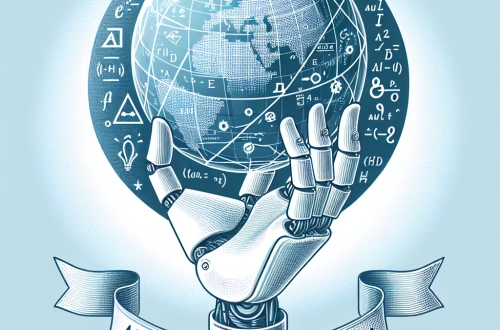Automating Workflows with ChatGPT and Zapier
Summary:
Automating workflows with ChatGPT and Zapier combines conversational AI with no-code automation to streamline repetitive business tasks. This integration allows non-technical users to connect ChatGPT’s natural language capabilities (like content generation, data analysis, and customer interactions) with Zapier’s 5,000+ app integrations. For solopreneurs, marketers, and operational teams, this pairing eliminates manual processes while maintaining human-like communication quality. As AI adoption grows, understanding this workflow automation approach provides competitive advantages in productivity, cost reduction, and service scalability without requiring coding expertise.
What This Means for You:
- Operational Efficiency at Minimal Cost: You can automate up to 40% of repetitive tasks like email responses, data entry, and content curation for less than $50/month. For example, Zapier’s free tier combined with ChatGPT API credits enables automated newsletter creation from RSS feeds with personalized opening paragraphs.
- Actionable Customer Engagement Upgrade: Automatically generate human-quality responses to common support tickets in platforms like Gmail or Slack via Zapier triggers. Start by creating a Zap that converts form submissions into ChatGPT-crafted replies, then manually review 20% of outputs to refine prompts.
- Actionable Data Processing Solution: Transform raw data into reports without spreadsheets. Create a Zap that sends CSV attachments from emails to ChatGPT for analysis, returning key insights in bullet points. Always include “verify calculations” in your prompts to reduce errors.
- Future Outlook or Warning: While these tools democratize AI workflow automation, increasing platform dependency requires strategic planning. OpenAI API changes could disrupt workflows, and over-automation risks customer alienation. Maintain human oversight loops and document all API connections for quick migration if needed.
Explained: Automating Workflows with ChatGPT and Zapier
The Convergence of Generative AI and Automation
ChatGPT (OpenAI’s language model) and Zapier (workflow automation platform) create symbiotic automation when integrated through API connections. This combination enables three transformative capabilities:
- Language Task Automation: Generating human-quality text for emails, reports, and customer communications
- Cognitive Workflow Enhancement: Adding analysis, summarization, and decision support to existing app stacks
- Trigger-Based AI Actions: Executing AI tasks based on specific events in other software systems
Essential Prerequisites
Beginners need four components to start workflow automation:
- Zapier account (Free plan supports 100 ChatGPT tasks monthly)
- OpenAI API key (Pay-as-you-go billing)
- Target applications (Gmail, Slack, Google Sheets, etc.)
- Clear trigger-action workflow mapping
Top Use Cases for Novices
1. Content Creation Pipeline
Trigger: RSS feed update → Action: Generate blog outline in ChatGPT → Post to WordPress. Quality tip: Use temperature parameter 0.7 for balanced creativity.
2. Customer Service Automation
Trigger: Help desk ticket → Action: Draft response with ChatGPT → Queue for agent review. Warning: Always include disclaimer about AI assistance.
3. Data Summarization
Trigger: Google Form submission → Action: Generate meeting-ready summary in ChatGPT → Post to Slack channel
Setup Walkthrough
Basic Tutorial: Automated Lead Qualification
- Zapier Trigger: New submission in Typeform
- Filter step: Only proceed if “Budget” exceeds $500
- Action: Send submission data to ChatGPT with custom prompt: “Create 3-point summary for sales team focusing on [Industry] lead with [Specific Need]”
- Action: Email generated summary to Sales Manager
Prompt engineering tip: Include output format requirements and context variables in brackets for dynamic generation.
Critical Strengths and Limitations
Strengths:
- No-code implementation
- Rapid prototyping (Workflows built in
- Cost-effective AI implementation (Average task cost: $0.02-$0.20)
Weaknesses:
- Token limits restrict output length (~500 words per task)
- Hallucination risks in critical workflows
- API latency (2-7 second response times)
Optimization Best Practices
- Context Chaining: Maintain conversation threads with “Continue previous response” prompts
- Input Sanitization: Use Zapier Formatter to clean data before ChatGPT processing
- Human Approval Layers: Implement mandatory review steps for compliance-sensitive outputs
People Also Ask About:
- What are the costs involved in using ChatGPT with Zapier?
Costs include Zapier’s subscription ($0-$20/month for starters) plus OpenAI API charges ($0.02 per 1K tokens for GPT-3.5). Most basic workflows stay under $30/month. Tip: Use Zapier’s built-in ChatGPT connector (requires ChatGPT Plus) if unwilling to manage API tokens directly.
- Do I need programming skills to automate workflows?
No coding is required for basic implementations. Zapier’s visual workflow builder and pre-made templates allow complete beginners to create automations in under 30 minutes. However, JavaScript/JSON knowledge helps craft advanced prompts or parse complex outputs.
- How reliable is AI-generated content for business workflows?
While generally coherent, all AI outputs require human verification. For critical documents, implement a two-step review process: 1) Automated validation via tools like Originality.ai 2) Human spot-checking of 15-20% outputs. Maintain version history of all generated content.
- What security precautions are needed for automated workflows?
Always mask sensitive data before API transmission using Zapier’s built-in redaction. Avoid sending PII (Personal Identifiable Information) to ChatGPT. Enable audit logs and set up workflow notifications for abnormal activity patterns.
Expert Opinion:
Maintain clear boundaries between human and AI responsibilities when automating critical workflows. While ChatGPT excels at content generation and pattern recognition, it shouldn’t autonomously handle sensitive decisions or customer escalations. Emerging regulations like the EU AI Act may soon require disclosure of AI usage in customer-facing communications. Businesses should implement usage logs and regularly audit automated workflows for compliance risks. The most sustainable automations combine AI efficiency with human judgment checkpoints.
Extra Information:
- Zapier’s ChatGPT Automation Guide – Official tutorials with real-world workflow templates matching common business needs
- OpenAI Prompt Engineering Guide – Critical resource for improving ChatGPT’s workflow output quality
- AI Workflow Showcase – Case studies demonstrating efficiency gains from ChatGPT-Zapier integration
Related Key Terms:
- How to integrate ChatGPT with Zapier for automated workflows
- No-code AI workflow solutions for small businesses
- Best ChatGPT Zapier templates for email automation
- Generative AI task automation step-by-step guide
- Cost-effective AI workflow design using Zapier
- Enterprise ChatGPT automation best practices
- Secure customer data handling in AI workflows
Check out our AI Model Comparison Tool here: AI Model Comparison Tool
#automating #workflows #ChatGPT #Zapier
*Featured image provided by Pixabay



